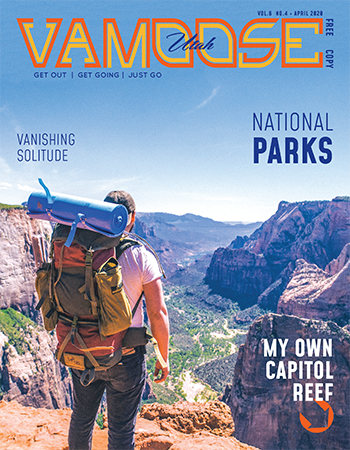Rockhounding rewards in adventure and treasures from the earth
Growing up in the Copper State (aka Arizona), our family vacations usually took us toward the desert around Moab and the San Rafael Swell. We kids spent much of the time on those trips digging around in the sand for treasures and climbing around on the red rock looking for lizards. Finding animals to chase was great, but the best finds we made were the geodes. We usually came across the round knobby stones—they kind of look like grey golf balls with warts—in gravel and sand washes and slot canyon bottoms. Breaking them open was the best part. You never knew if it was a good one until it cracked in half and you could examine the crystals inside. Sometimes there wasn’t much to see. Every once in a while, you got lucky.
People hunt for all sorts of things in Utah—wildflowers, mushrooms, big game and ski lines. They also hunt for rocks—really, it’s not just a kid thing. Rockhounding, as it’s commonly known, isn’t unique to Utah. Some people go out looking for big scores like jade (in Big Sur, California), diamonds (in Arkansas), sapphires (in Montana) and emeralds (in North Carolina). Here in Utah, you can find a few precious stones, such as topaz, our official state gem (found in Beaver, Juab and Tooele counties). You can also find a wealth of interesting and beautiful fossils, minerals and rocks that tell amazing stories about the unique geologic history of this place.
Whether you’re specifically interested in rocks and fossils, or just looking for another way to explore this great state, rockhounding is a worthy adventure. Here are a few ideas to get you going.
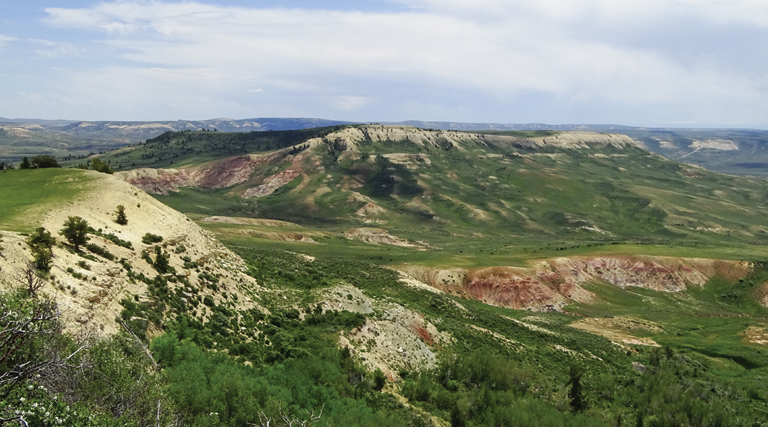
Fossil Butte from Cundick Ridge
Easy Scores
What: Oolitic Sand
Where: Stansbury Island
This isn’t your normal beach sand. While most beach grains are made from ground down rock and shell, the foundation of these little rounds is … poop. Yes, poop. Like an oyster’s pearl, oolitic sand begins with a substance, usually brine shrimp fecal matter—sometimes a mineral fragment. As these oolites roll around along the bottom of Great Salt Lake they gradually accumulate layers of calcium carbonate. Ultimately, they are washed up onto the beaches as perfectly round, smooth sand grains. Outside of Utah, you can find similar mineral sands in the eastern Mediterranean and the Persian Gulf.
Directions: Travel approximately 36 miles west of Salt Lake City on Interstate 80. Take the second Grantsville exit. Turn west and follow the road to Stansbury Island. The oolitic sands are most easily found on a sandy dune just off the road on the west side of the island. The land is administered by the BLM. No permit needed for collection.
Easy Scores
What: Wonderstone
Where: Vernon Hills, Tooele County
If you’re into the spiritual energy that different rocks possess, wonderstone is one you might be interested in. This volcanic rock, a kind of jasper, is believed to balance masculine and feminine energies. It reportedly enhances mental clarity, creativity and imagination, and it infuses spaces with tranquil energy vibrations and reduces tension.
Whether or not you believe all the New Age hype, wonderstone is a beautiful piece that any rockhound would want to include in his or her collection. Predominantly composed of volcanic glass particles and welded together by heat and compression, the variations of this rock that are found locally have astounding coloration bands. These rocks look like maroon, yellow, white and salmon-colored taffy stretched then folded into lumps. Polish these rocks up and the colors pop even more.
Directions: Take I-80 west to Tooele. Travel south about 31 miles on state highway 36 to the town of Vernon. Four-and-a-half miles past Vernon, turn north onto a dirt road and follow the train tracks for another 1.7 miles until the road turns northwest. A half mile after the curve, you will start to see piles of wonderstone.
Recommendations: Check weather before you go. A 4WD vehicle is recommended on the dirt road. Avoid the areas marked for a private mining claim. Bring a rock hammer, protective eyewear and water (to stay hydrated).
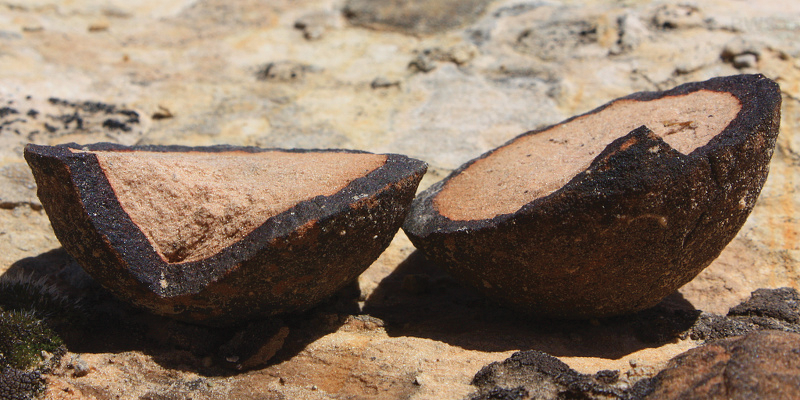
Broken Moqui marble
Rocky Road Trips
What: Moqui Marbles
Where: Southern Utah
Called Navajo cherries, Navajo berries, Kayenta berries, Shaman stones and iron concretions, these red-brown and black balls made of iron oxide and sandstone range in size from pea to grapefruit. These form underground when a chemical reaction causes iron saturated groundwater to condense into spheres. Sand grains eventually cement around these iron deposits. They become exposed from their rock beds as they erode from the Jurassic-age Navajo Sandstone formations where they were formed.
Moqui (moe-key) marbles are found widely across southern Utah. Most people will run across them while hiking around Zion National Park, Snow Canyon State Park and Grand Staircase-Escalante National Monument. If you find them in any of these places leave them be. It is illegal to take anything out of a national park, a state park or a national monument (see sidebar on where and how to legally rockhound).
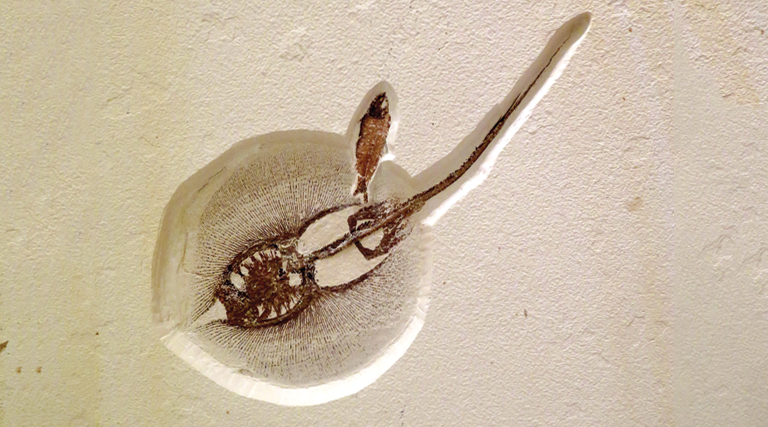
A fresh-water stingray fossil found at American Fossil at Kemmerer, Wyo.
Rocky Road Trips
What: Eocene fossils
Where: American Fossil, Kemmerer, Wyo. (a 2-hour drive northeast of Salt Lake, see website for directions), 801-836-7269, FishDig.com
The oldest discovered bat fossil—perfectly preserved with a complete skeleton, cartilage and wing membranes—was found in southwestern Wyoming in the Green River Formation. This particular geologic formation, which first drew the attention of scientists in the 1920s, holds important fossil records from the Eocene. This epoch, lasting from 56 to 33.9 million years ago, was a period characterized by a warm climate, high sea levels and expansive wetlands and forests. This period also marks the appearance of modern birds and early forms of primates, rodents and proboscideans (like elephants). Today, the formation extends through some parts of northern Utah and Colorado, but it is in Wyoming that the most impressive, completely preserved fossil specimens have been found.
American Fossil is one of the few quarries where the general public can dig for, and keep, rare fossils. Here, amateur rockhounds have discovered the remains of paddlefish, stingrays, crocodiles, turtles, snakes, three-toed horses, giant birds, small rhinos and camels.
How to dig: American Fossil provides the necessary tools and cutting stations. Staff at the site provides public assistance. Prices range from $35/120 hour/day, half price for kids. The quarry is open May-September. Visit FishDig.com
Special Stop: Fossil Butte National Monument (864 Chicken Creek Road, Kemmerer, Wyo., 307-877-4455, NPS.gov/fobu), a paleontological heritage site, is just 30 minutes from American Fossil quarry. Enjoy hiking trails and visitor center exhibits. Observe paleontologists on-site as they dig for new finds, learn about the latest research and watch fossil preparation demonstrations. The monument is free and open to the public year-round, hours vary. No on-site camping.
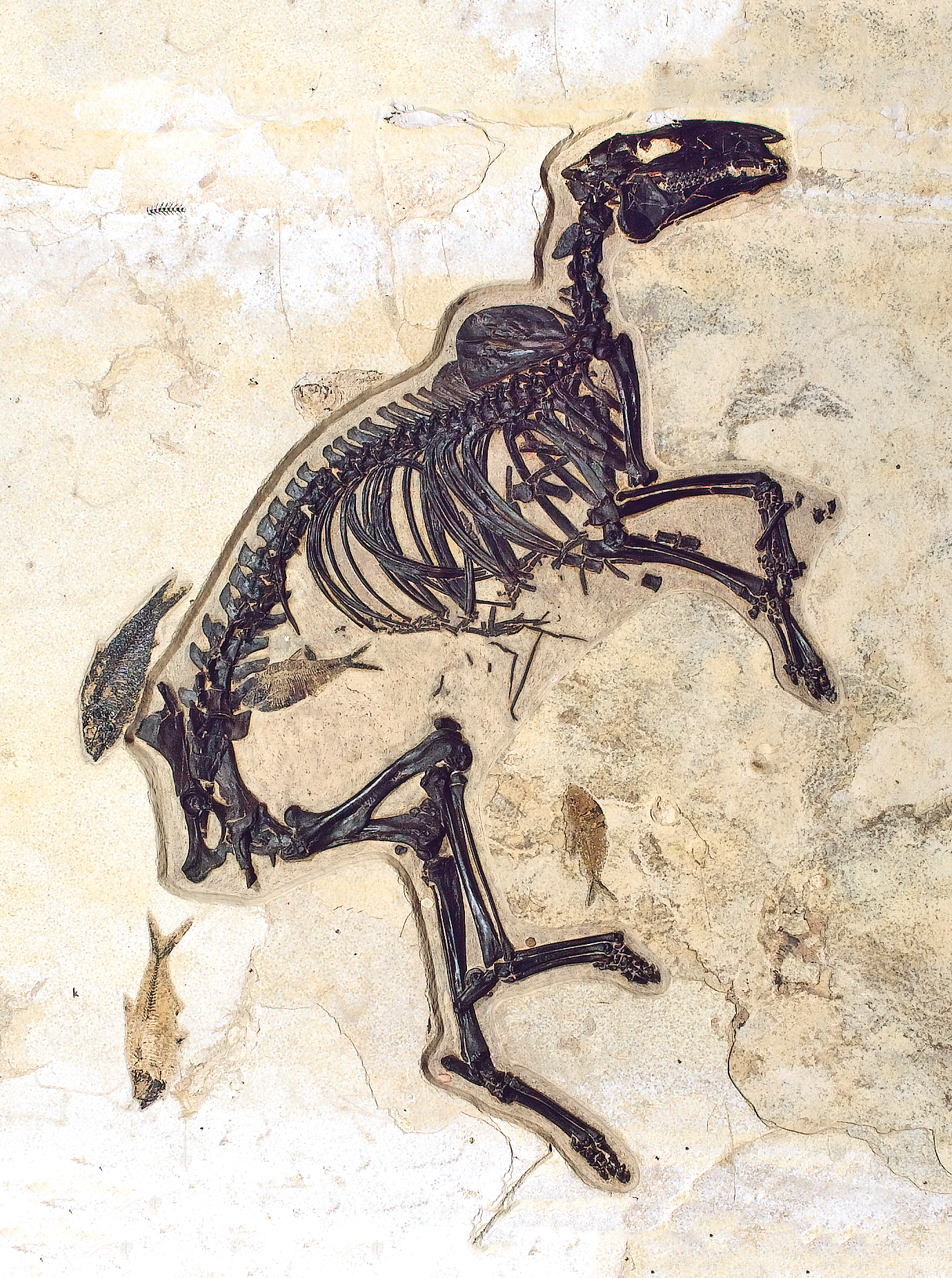
Protorohippus venticolum, early horse, found at Fossil Butte near Kemmerer, Wyo.
Know Before You Go
Anyone collecting rocks, gems, minerals or fossils must know if collection is allowed by law in the area they plan to search. Laws vary depending on land ownership and jurisdiction.
About 67 percent of Utah lands are managed by the federal government. Collecting is never allowed in national parks, national monuments, American Indian lands, military reservations, dam sites or wildlife refuges. Also prohibited on federal lands is any collection of dinosaur and other vertebrate fossils (except by permits issued to accredited institutions), any collection of artifacts or archeological resources and any material remains of humans or human settlement at least 50 years old.
Access to and permission to collect on private lands must be granted by the owner.
BLM allows collecting for personal, non-commercial purposes a reasonable amount of rocks, minerals, gemstones, invertebrate and plant fossils, avoiding any major surface disturbance. Collecting petrified wood for personal use is allowed up to 25 pounds.
Without a permit, the U.S. Forest Service allows collecting a reasonable amount (not exceeding 250 pounds per year) of rocks and agates for personal, non-commercial purposes as well as personal collection of meteorites, petrified wood, invertebrate fossils (trilobites, snails). Not allowed is the non-permitted removal of vertebrate fossils including the remains of any animal having a bony skeleton, including fish, amphibians, reptiles, dinosaurs, birds and mammals. Removing dinosaur tracks in these areas is also prohibited. Permits are only issued to qualified paleontologists curating for approved facilities.
With a permit, Utah state lands allows private collecting of up to 250 pounds per year of rock and other minerals. A fee is charged for the annual permit. Not allowed are the collection of dinosaur and other vertebrate fossils, collecting in state parks and collecting in areas with active mining operations.
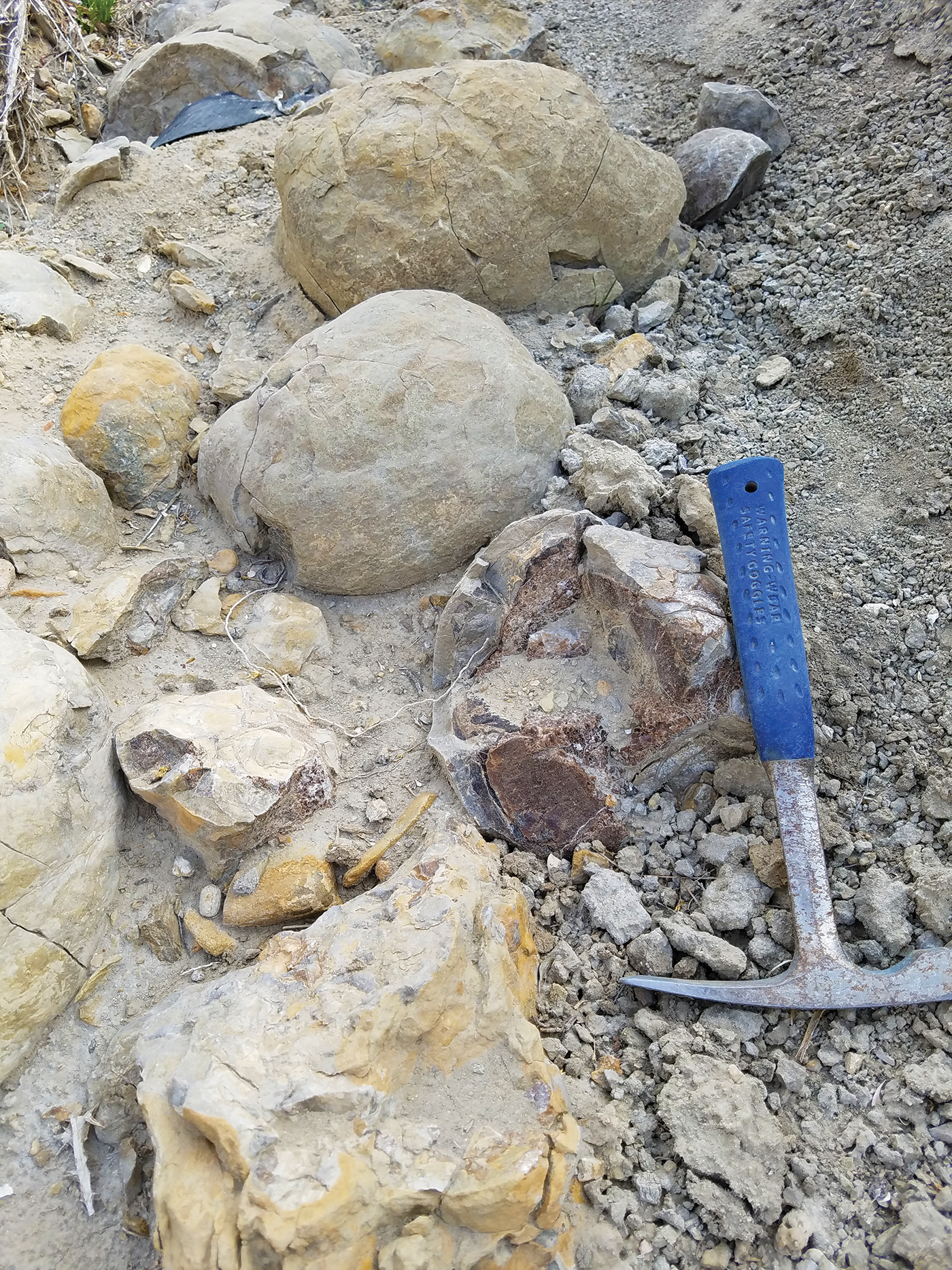
Know the regulations before collecting rocks, gems, minerals or fossils
Local Rockhound Clubs
Wasatch Gem Society
Meetings are the third Monday of each month, 7 p.m. at Bicentennial Hall in Sandy. Visitors welcome. Additional benefits with membership—including club fieldtrips. The Wasatch Gem Society’s annual gem show will be held April 19-21, 2019, at the Salt Lake County Equestrian Park and Event Center (2100 W. 11400 South, South Jordan,.385-468-1600, VisitSaltLake.com/equestrian-center)
WasatchGemSociety.com
Rockhounders Outreach for Community Knowledge (R.O.C.K.)
Meetings are the first Tuesday of each month, 7 p.m. at the Viridian Event Center, Salt Lake County Viridian Library, 8030 S. 1825 West, West Jordan, 801-948-785, ViridianCenter.org).
RockHoundersOCK.com
Mineral Collectors of Utah
Meetings are the third Wednesday of each month, 6:30 p.m., at Sprague Branch of Salt Lake City Library, 2131 S. 1100 East, Salt Lake City, 801-594-8640, SLCPL.org).
M-C-U.org


